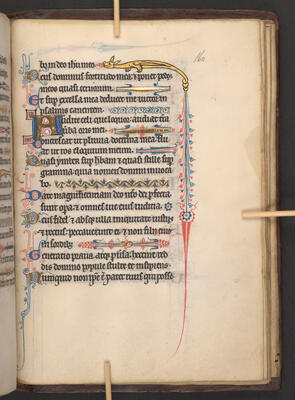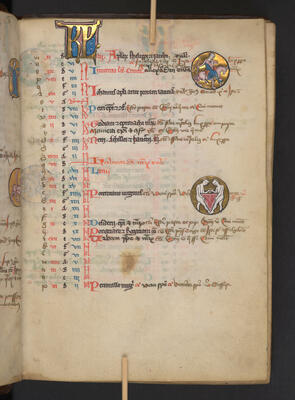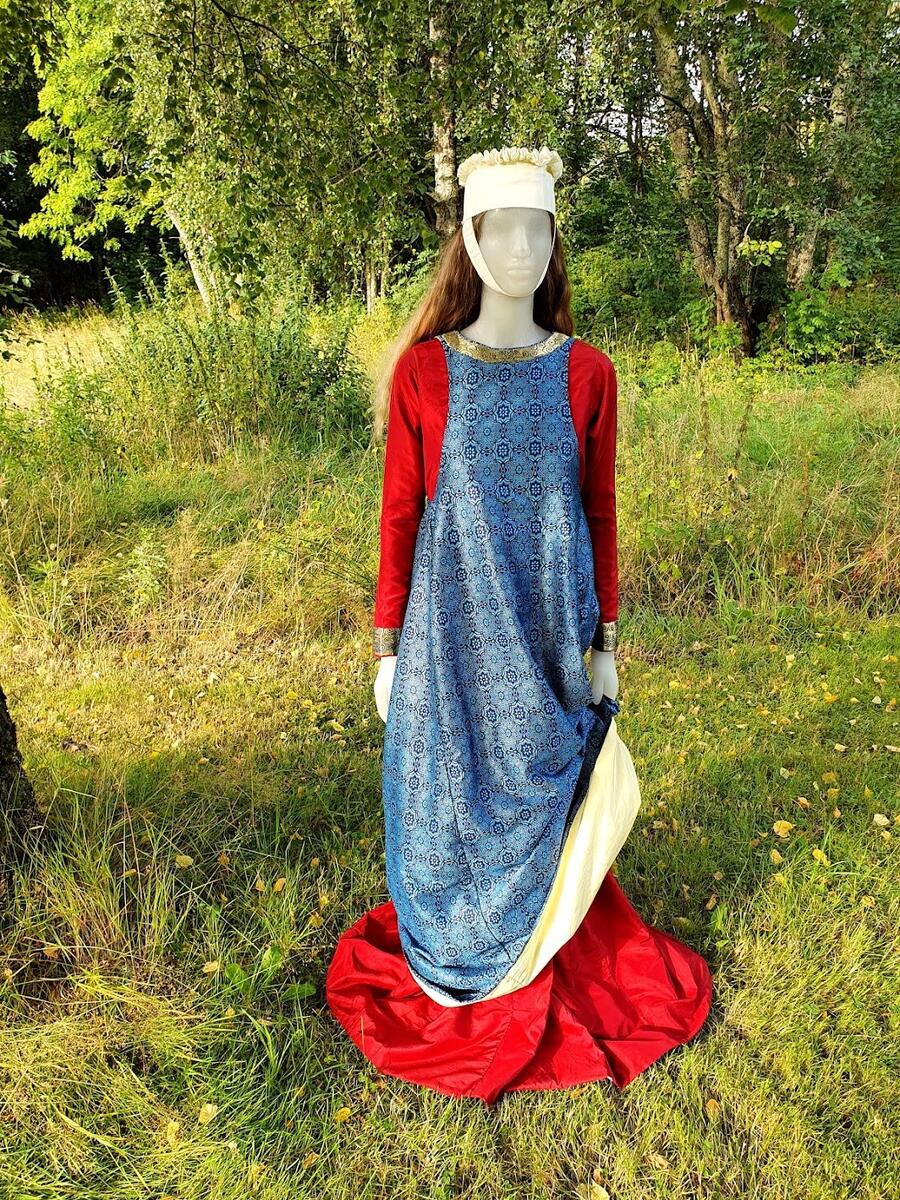Prinsesse Kristina
Vinteren 1234 ble det i Bergen født en prinsesse. Faren var den mektige kong Håkon Håkonsson og moren var dronning Margrete, datter av hertug Skule. Kongsdatteren fikk navnet Kristina, og hun skulle bli en myteomspunnet prinsesse.
Håkon Håkonssons saga, ført i pennen av Sturla Tordsson rett etter kongens død, forteller detaljert om viktige hendelser i prinsessens liv, om bryllupsplanene og ekteskap med spanskekongens bror.
Høsten 1256 kom spanske utsendinger til Tønsberg med budskap fra kong Alfonso 10. og ønske om prinsesse Kristina som hustru for en av hans brødre. Kong Håkon samtykket, og året etter reiste Kristina fra Tønsberg med stort følge den lange veien til Valladolid i Spania. Der ble hun og følget godt mottatt av kong Alfonso og bryllup ble feiret med den yngste av brødrene, don Felipe. Paret flyttet inn i palasset i Sevilla, men ekteskapet ble ikke langvarig. Fire år senere døde prinsessen, barnløs og bare 28 år gammel. Hun ble gravlagt i den nordspanske byen Covarrubias, 800 km fra Sevilla. Mytene er mange om hvordan hun hadde det i Spania.
Prinsessen i historien
Hva var årsaken til at Kristina giftet seg med den spanske kongens bror? En mulighet kan være at kong Alfonsos politiske virksomhet i mange år var basert på å bli kronet til tysk-romersk keiser. Det tysk-romerske keiserriket strakte seg på sitt største fra Nordsjøen til Jerusalem og var det europeiske nervesentrum i middelalderen.
Kong Alfonso var i sin iver etter å oppnå den tysk-romerske keiserkronen ute etter allierte – og kong Håkon ble ansett for å være en av de mest innflytelsesrike monarker i Nord-Europa. Dessuten sto norskekongen på god fot med både Tyskland og England, og Norge var en betydelig sjøfartsnasjon, noe som kunne komme spanskekongen til nytte ved eventuelle korstog.
Prinsessens psalter
Det er ikke mange som vet at det finnes en gjenstand som med sikkerhet har tilhørt prinsesse Kristina. Og det er en bønnebok, eller et psalter, som i dag oppbevares på Det Kongelige Bibliotek i København. Det er et håndskrift som består av 175 blad, det er 20 cm høyt og 14 cm bredt. Boken inneholder Davidssalmene i latinsk oversettelse, etterfulgt av bønner og litaniet. Psalteret innehar rike minuskler og illustrasjoner. På psalterets perm finnes følgende innskrift: ”Dette psalter eide Jomfru Kristin, datter av Kong Håkon. Fru Ingebjørg gav det til sin datter Ellin”. Man har klart å følge bokens eiere helt opp til 1500-tallet.
Psalteret kan ha vært gitt i gave til kong Håkon og stammer trolig fra Frankrike. Kong Håkon kan deretter ha gitt psalteret som gave til sin datter Kristina. Lot hun psalteret bli igjen i hjemlandet da hun forlot Norge sensommeren 1257? Eller ble det brakt tilbake til Norge etter hennes død? I 2021 lånte Slottsfjellsmuseet-Norsk Borgsenter inn denne fantastiske boken som vi vet at hun eide!
- 1/2
- 2/2
Sarkofagen
Både Karl Wedel Jarlsberg (1928) og Magnus Grønvold (1935) mente at Kristinas sarkofag måtte befinne seg i korsgangen i den lille stiftskirken i Covarrubias. I 1952 ble det satt i gang restaureringsarbeider i kirken, og håndverkerne måtte flytte på to av sarkofagene.
Man trodde bestemt at den første av sarkofagene var tom og for å ikke forløfte seg, tok de av lokket. Til sin store forbauselse oppdaget de en liten trekiste inni sarkofagen! Kisten viste seg å inneholde et delvis mumifisert skjelett, noen lærknapper og broderte trøyer. På mumiens venstre skulder var det festet en sammenfoldet pergamentbit. Perganmentbiten viste seg å inneholde formler mot øreverk.
Gravfunnet
I 1958 ble sarkofagen formelt åpnet for å ta en rettsmedisinsk undersøkelse av restene. Gravfunnet besto av:
”… silketaft med innvevede gullaks og stykker av glatt granatfarget silketaft og andre stykker av glatt lerret, antakeligvis vevet og har tilhørt undertøyet. Tekstilene er fremstilt på sent 1200-tall.
Et delvis mumifisert skjelett med en lengde på 172 cm. Kraniet er lite og samtlige tenner er godt bevart, uten spor av caries. Bred og velutviklet brystkasse, tynne og smale ribbein og kort ryggsøyle. Mumifiserte hender med fine og korte fingre, noen med lange og avfilte negler. Tærne lange og godt forbenet. Bekkenet ikke særlig stort, men med en diameter og omfang karakteristisk for en kvinne. Alt tyder på et skjelett av en kvinne av høy reisning, ung og sterk, sannsynlig alder mellom 26 og 28 år….”.
Pergamentbitene med formler mot øresmerter kan tyde på at hun døde av øresykdom.
Pergamentet
Pergamentets størrelse er 15 x 10 cm og har på den ene siden nedskrevet 14 linjer hvor man har klart å lese de siste syv. Innholdet er en bønn til Jomfru Maria. På den andre siden fant man 15 linjer hvorac man har tydet de første ni – den syvende er ufullstendig – og disse linjene inneholder tre resepter eller formler mot øresmerter: Bokstavene er typiske for Afonso 10.s regjeringstid:
Mot smerte i ørene bruk planten
malurt og kok den i en gryte og når den er godt
utkokt legg øret over dampen fra gryten og du blir frisk
og ha hodet tildekket og når ørene verker
ta malurt og bland den med oksegalle
og putt denne inn (i ørene) og du blir frisk
og når du har smerter inne i ørene
(ta) saften av hvitløk og saften av smalkjempe og putt
dette i ørene og du blir frisk.
Prinsessen i Sevilla
Ekteskapsinngåelse var en av de viktigste formene for etablering av nettverk og allianser i middelalderen. Det var derfor ikke uvanlig at kongsdøtre ble bortgiftet. En av mytene rundt prinsessen forteller at hun døde som følge av det varme klimaet i Syd-Spania og av hjemlengsel til Tønsberg. I følge sagaen kunne prinsesse Kristina imidlertid selv velge hvem av de spanske kongebrødrene hun ville gifte seg med, noe som tyder på at hun hadde en grad av valgfrihet.
Prinsessen valgte don Felipe, prinsen som var nærmest henne i alder. Don Felipe er blitt beskrevet som omgjengelig, snill, aktiv og glad. Det er også blitt fortalt at Kristina var munter og lett til sinns under den lange reisen til Spania for å gifte seg. Hun visste nok hva som var forventet av henne, og spilte rollen sin godt. Hun var jo representant for sin far kong Håkon og for Norge!
- 1/1
Drakta til Prinsesse Kristina / The clothing to Princess Kristina


